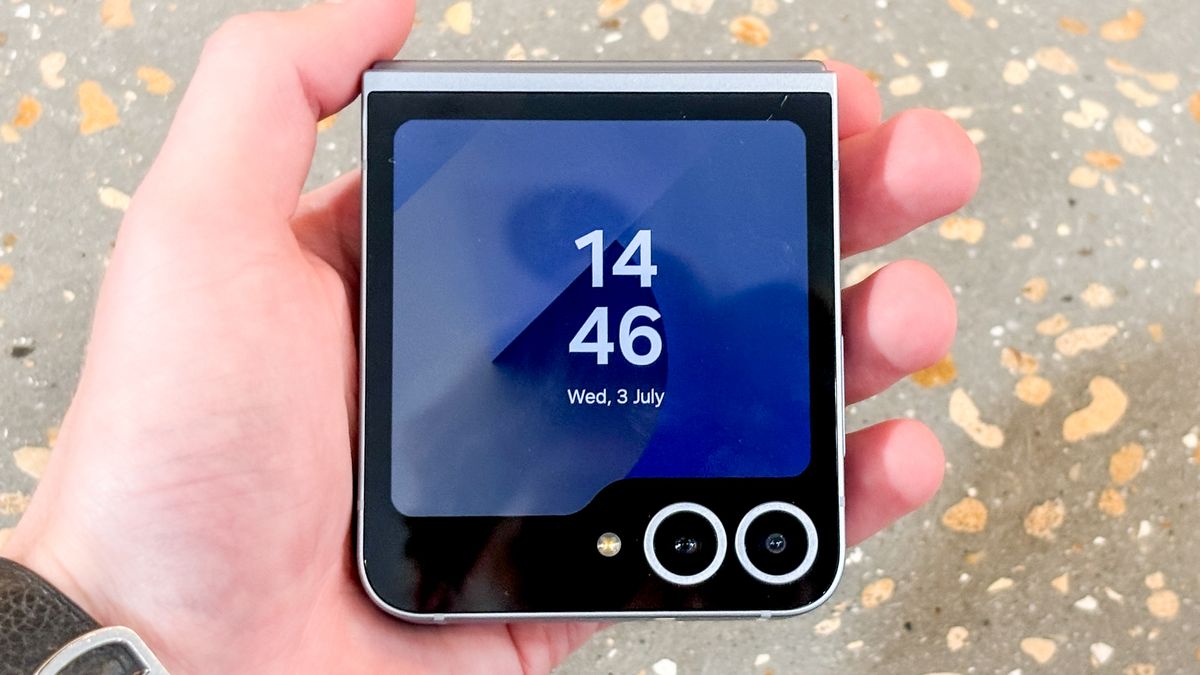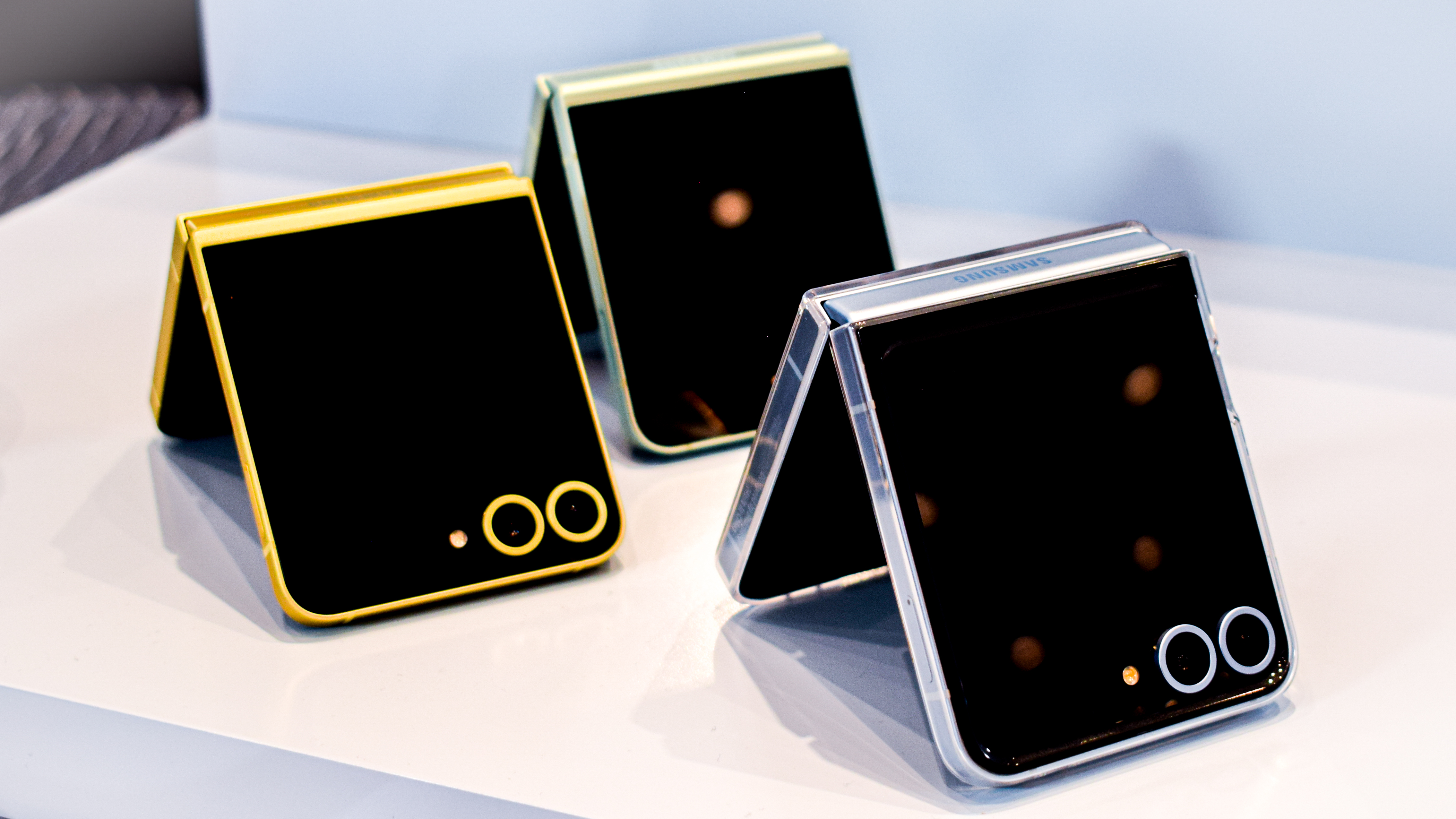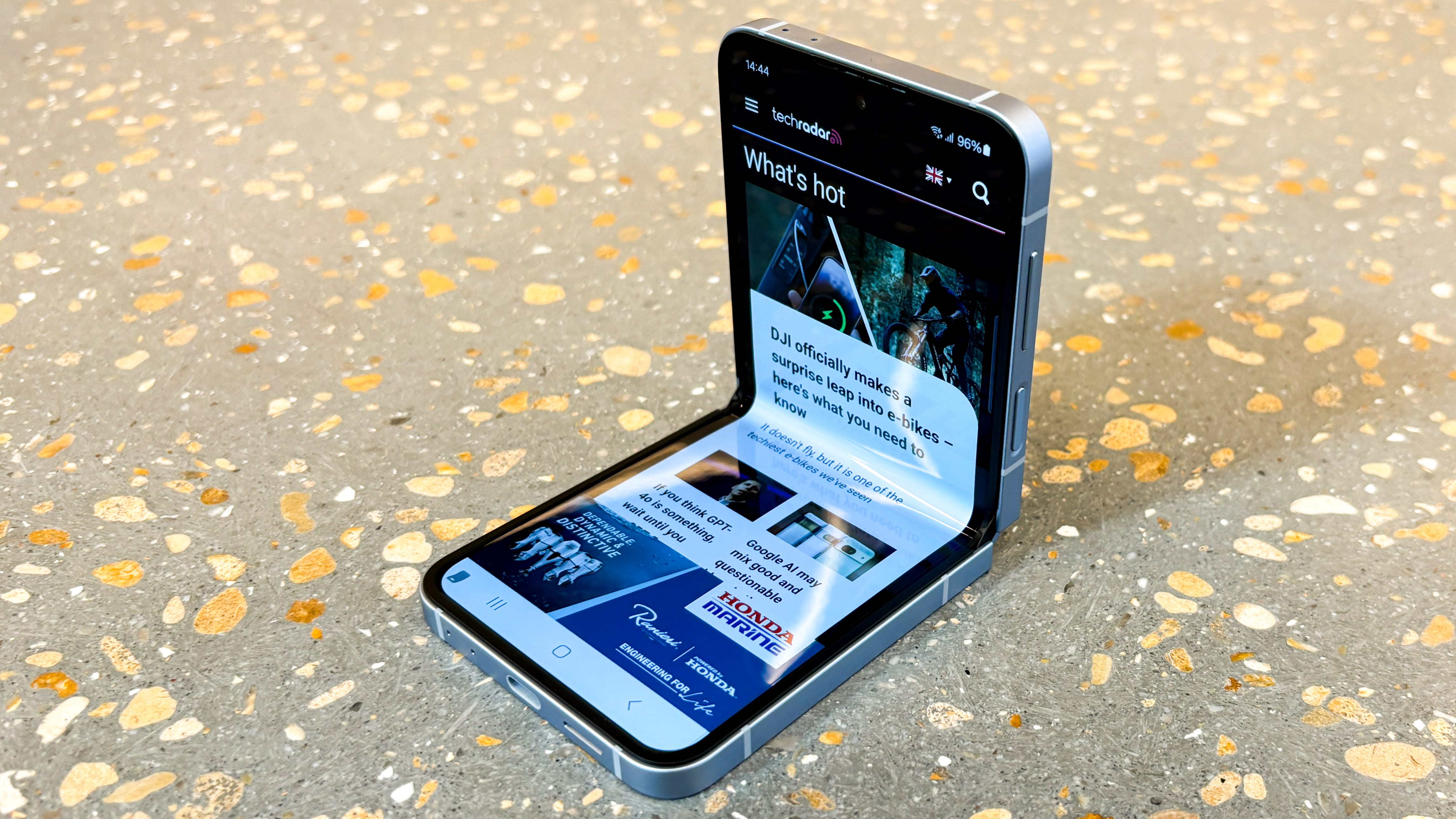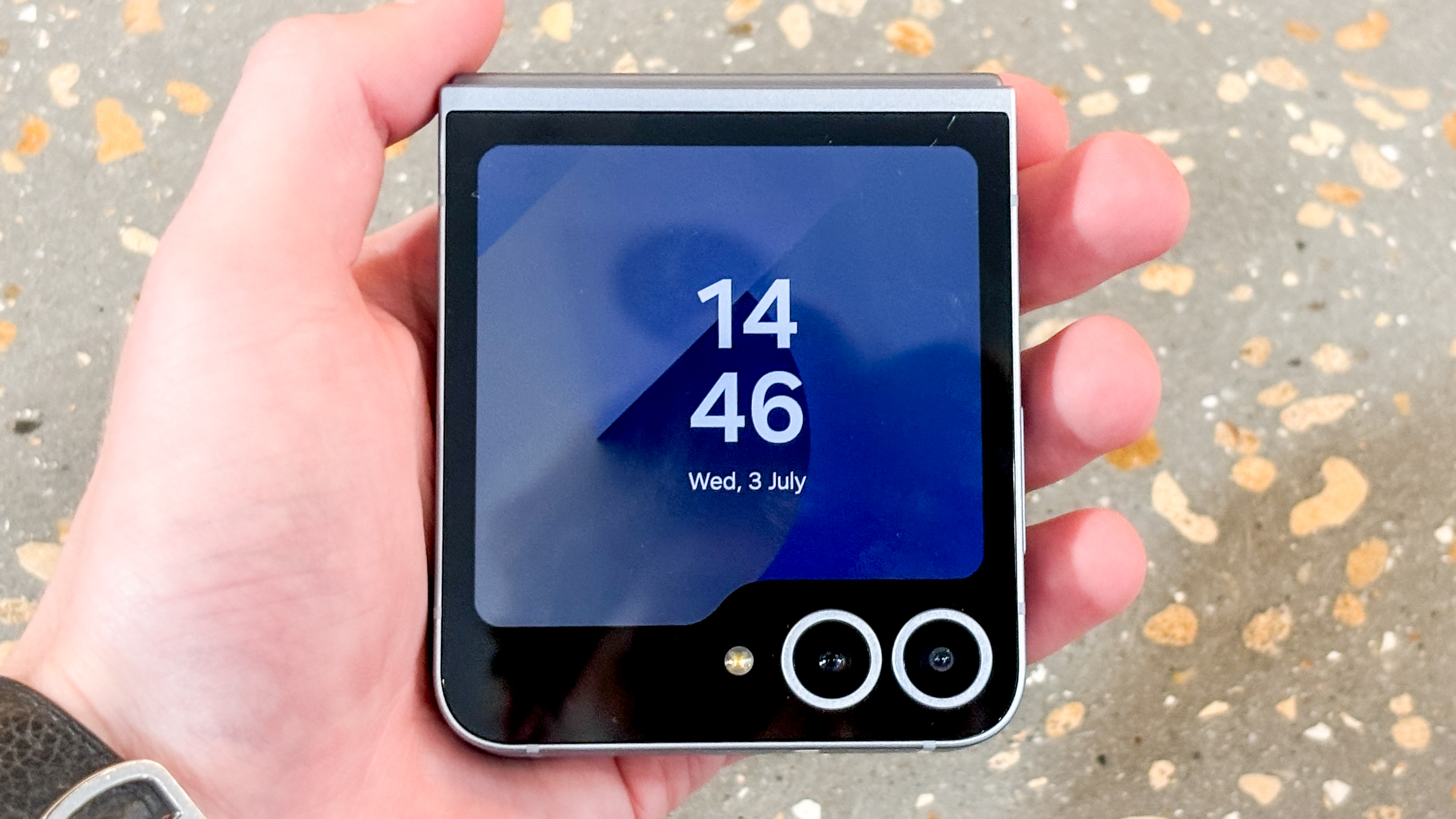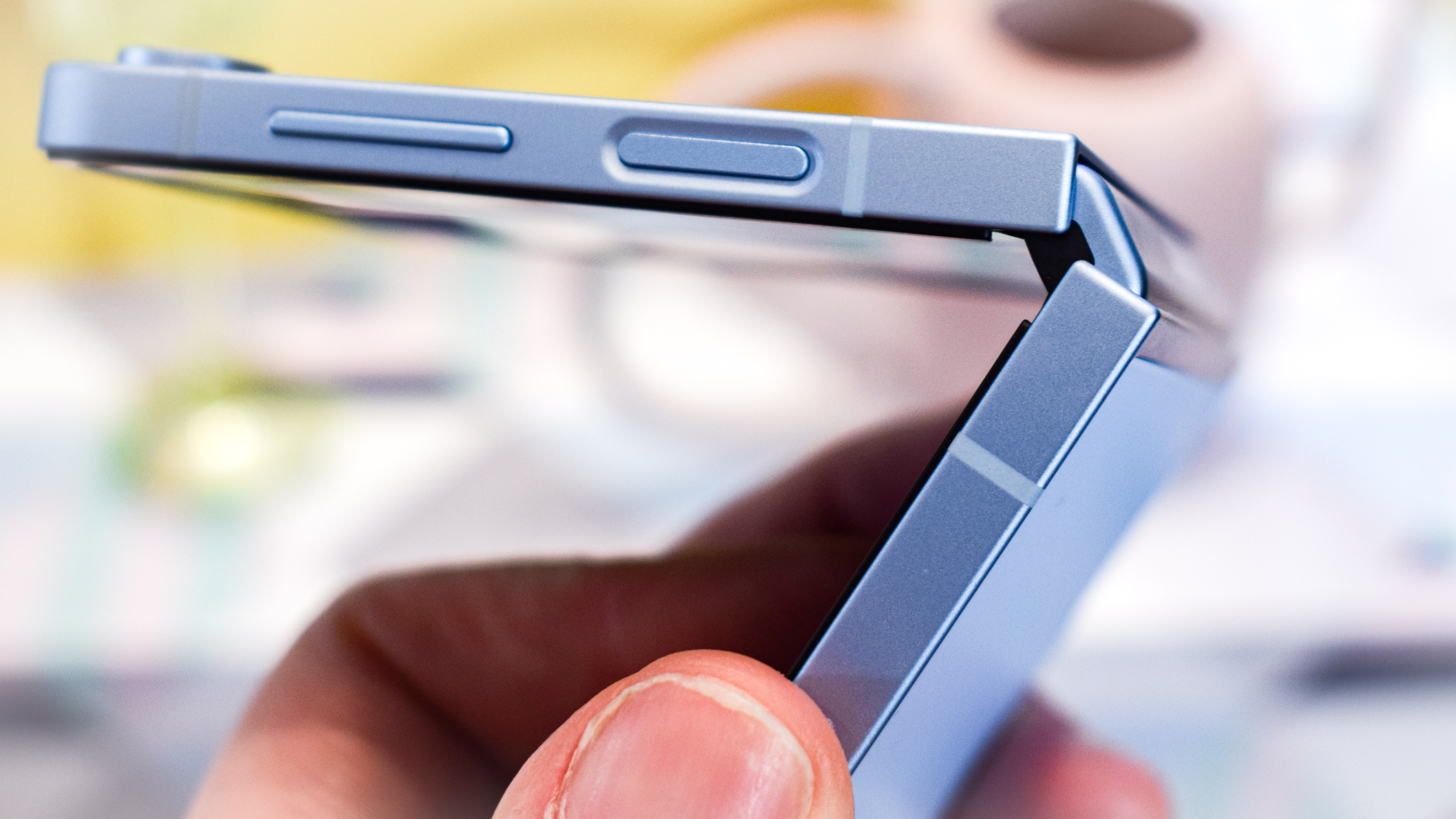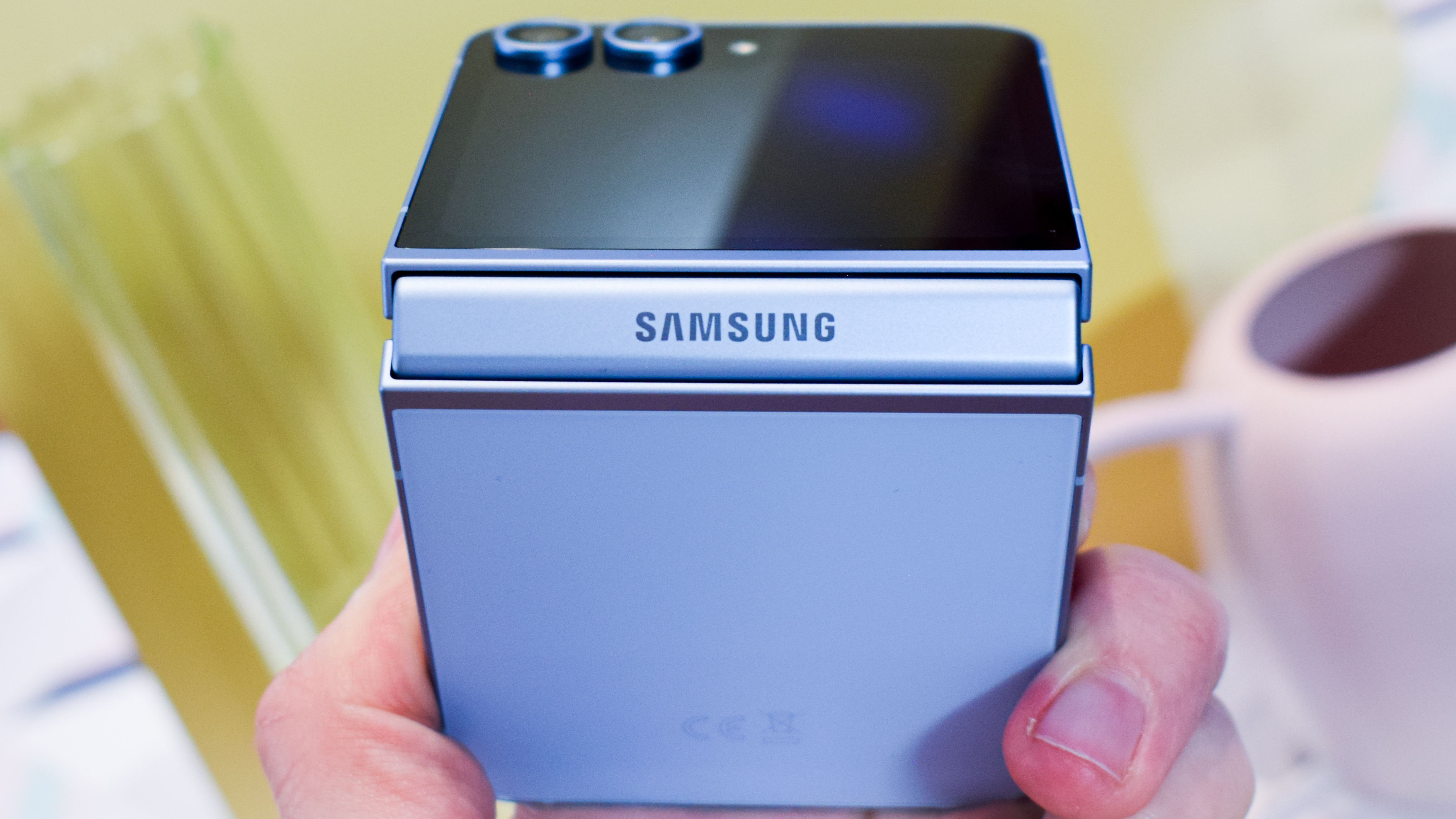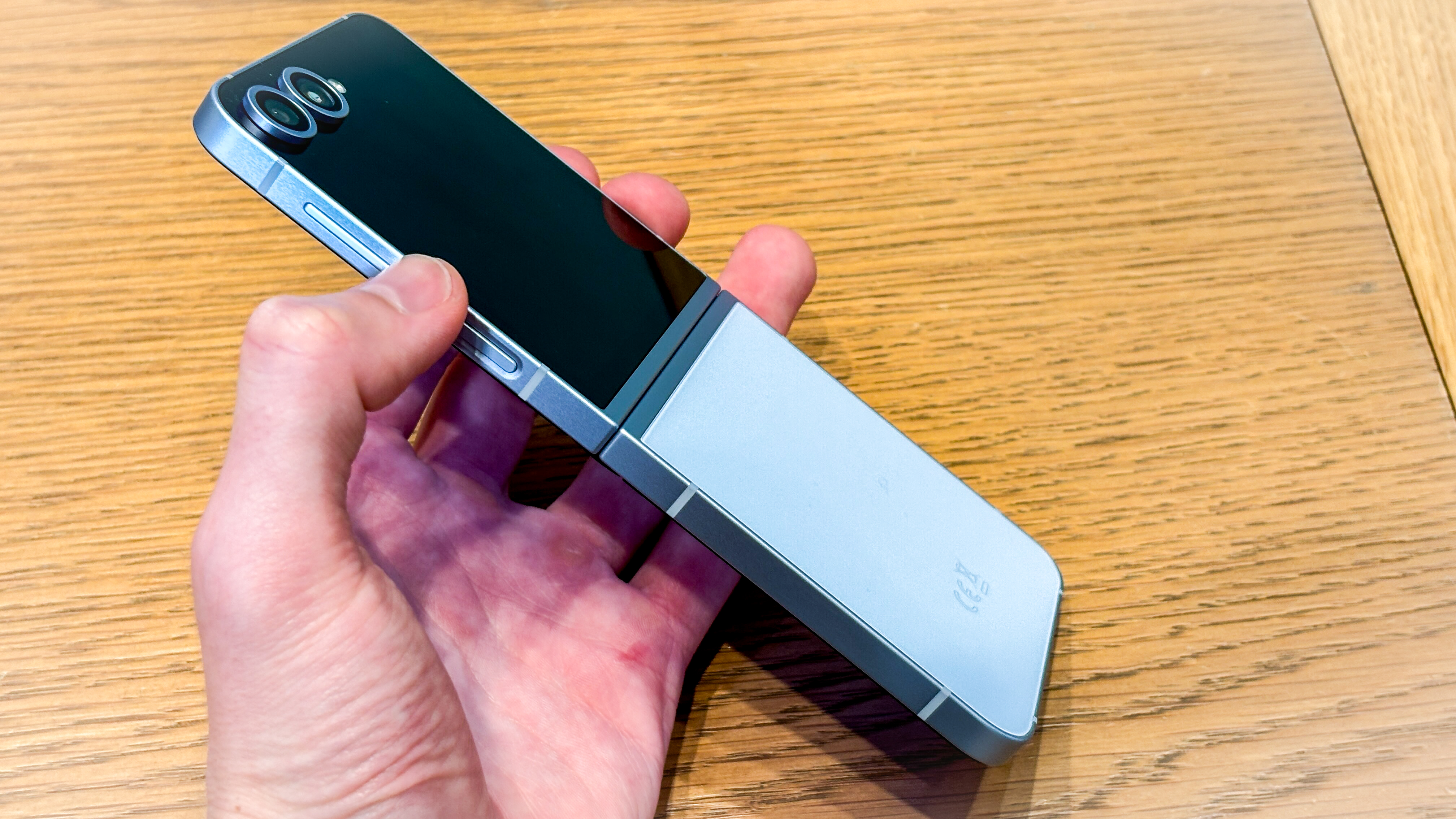Samsung Galaxy Z Flip 6: Two-minute hands-on
The best foldable phones are no longer considered the overly expensive, impractical cousins of the best phones around, but the number of clamshell foldables on the market continues to be dwarfed by the number of tablet-style foldables on offer in 2024.
Samsung, for its part, has long played both sides of the foldable field, with only Motorola for company in the flip-phone space (the Oppo Find N2 Flip proved a worthy foil to the Galaxy Z Flip 4, but the limited global availability of its successor, the Oppo Find N3 Flip, meant that last year’s Galaxy Z Flip 5 went up against the Motorola Razr Plus 2023 and little else).
The story is similar for the Samsung Galaxy Z Flip 6, which arrives with limited competition beyond Motorola’s new Motorola Razr Plus 2024. That’s not to say Samsung has been complacent with its latest clamshell foldable – the Galaxy Z Flip 6 brings plenty of worthwhile upgrades over the Galaxy Z Flip 5 – but it certainly has a lower bar to clear than the Galaxy Z Fold 6, which finds itself in competition with the Google Pixel Fold, OnePlus Open, Honor Magic V2 and Xiaomi Mix Fold 3 (not to mention their respective imminent successors).
I bore this context in mind when handling the Galaxy Z Flip 6 for the first time ahead of Samsung Galaxy Unpacked 2024. Visually, it’s exactly the same phone as the Galaxy Z Flip 5 – save for some color-matched rings around the rear camera lenses and a nice satin finish for the frame – with most of this year’s upgrades coming either under the hood or in the durability department. The Galaxy Z Fold 6, by contrast, looks a lot more premium than the Galaxy Z Fold 5, but Samsung clearly hasn’t felt the same pressure to drastically overhaul the appearance of the Galaxy Z Flip 6 given its current position atop the clamshell market.
@techradar
♬ original sound – TechRadar
The good news is that this tried-and-tested design still very much works. The Galaxy Z Flip 6 boasts the same 3.4-inch, 60Hz AMOLED cover display (720 x 748) and 6.7-inch, Full HD+ AMOLED main display (2640 x 1080) as its predecessor, with the larger of these two screens boasting an adaptive 1-120Hz refresh rate. The phone itself measures 72 x 85 x 15mm when folded and 72 x 165 x 7mm when unfolded, and it weighs just 187g, which again is the same as the Galaxy Z Flip 5.
The functionality of the ‘Flex Window’ (i.e., the cover display), as Samsung calls it, has been further expanded with interactive wallpapers and ambient weather animations, but you’ll still get the usual smorgasbord of clock, calendar and timer widgets to choose from.
As with the Galaxy Z Flip 5, the Flex Window on the Galaxy Z Flip 6 skirts around the phone’s rear cameras, which leaves a bigger bezel than you’ll find on either of Motorola’s latest flip devices. For me, though, this dented square shape brings a nice retro vibe to the Galaxy Z Flip 6, especially now that the rear camera lenses have been made more eye-catching with color-matched rings. The combination results in a cute, retro robot-like look, which works particularly well with the phone’s (mostly) new colors: yellow, blue, mint and silver.
So far, so similar; but as mentioned, the meaningful upgrades come under the hood. For starters, the Galaxy Z Flip 6 boasts a 4,000mAh battery, where the Galaxy Z Flip 5 and Galaxy Z Flip 4 both use a 3,700mAh cell. Samsung has also squeezed a vapor cooling chamber – the first ever in a flip phone – into the Galaxy Z Flip 6, so the new foldable should offer improved heat dissipation as well as longer battery life (we haven’t yet been able to test either metric). These upgrades are made more impressive when you consider the phone’s unchanged 187g weight. So, where did Samsung shed the pounds?
One answer could be in the materials protecting the Galaxy Z Flip 6. According to Samsung, the Armor Aluminum frame encasing its latest foldable is 10% stronger than before, while the hinge and edges have been toughened up, too.
Most welcome of all is a new IP48 dust- and water-resistance rating, which betters the water-only IPX8 rating of the Galaxy Z Flip 5 and Motorola Razr 2024, but falls just short of the Galaxy S24’s totally dust-proof IP68 rating. In layman’s terms, this means the Galaxy Z Flip 6 is protected against particles over 1mm in size (i.e., large bits of dust).
On paper, at least, this combination of durability features makes the Galaxy Z Fold 6 the most practical flip phone of the lot, and I certainly felt more comfortable about repeatedly opening, closing and repositioning the device as I photographed it for this hands-on review.
The Galaxy Z Flip 6 is powered by Qualcomm’s top-end Snapdragon 8 Gen 3 chipset (i.e., the chipset inside almost all of the current best Android phones) and 12GB RAM instead of 8GB, so I highly doubt that you’ll be left wanting for performance with this phone.
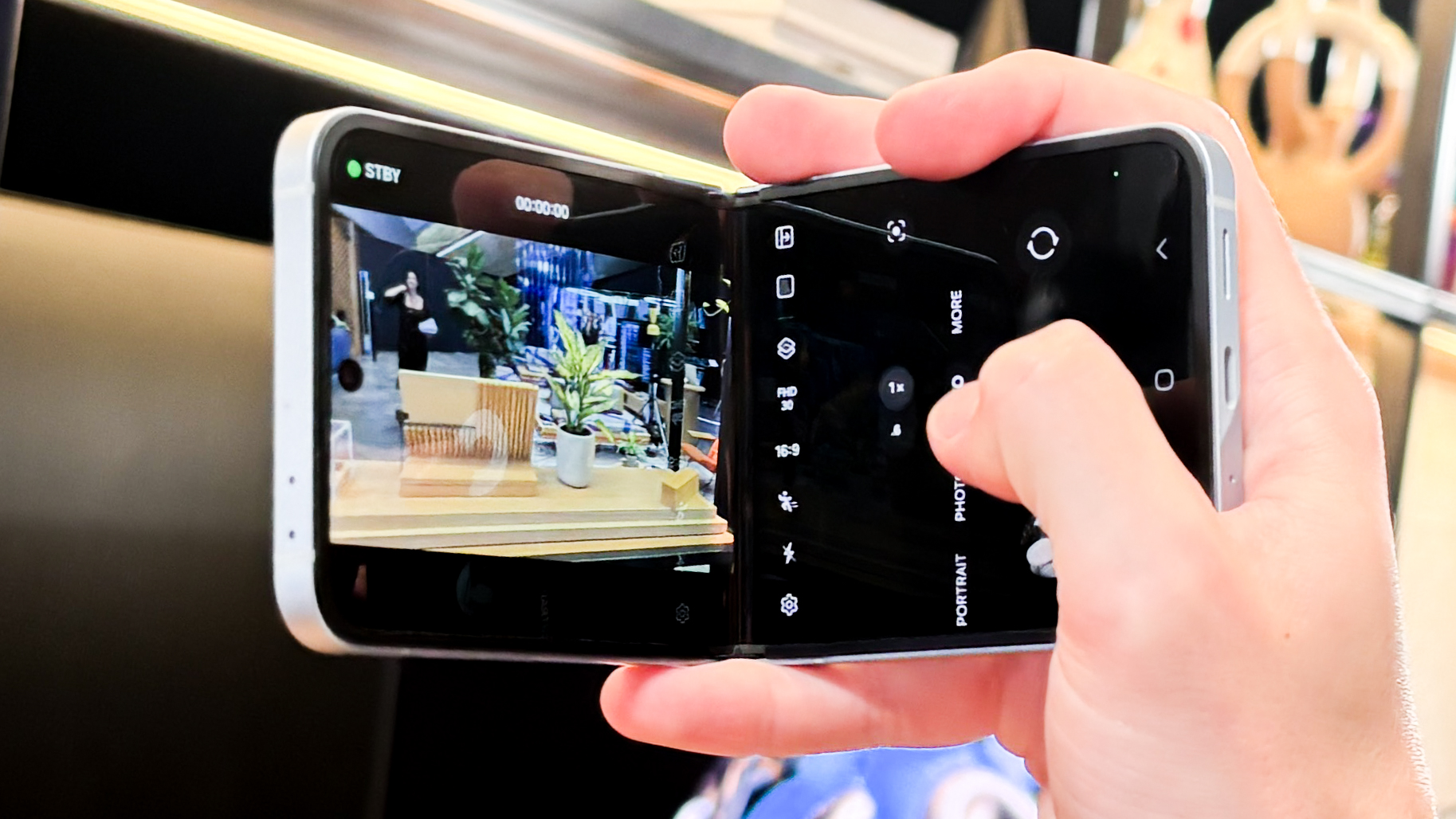
The 8 Gen 3 brings the Galaxy S24’s impressive ProVisual photography engine to Samsung’s latest foldable, too, and you’re also getting the same main and ultra-wide cameras as on the Galaxy S24 Plus – specifically a 50MP main lens and a 12MP ultra-wide lens. That’s a marked improvement over the Galaxy Z Flip 5’s 12MP primary and ultra-wide combination. On the front, the phone’s 10MP selfie snapper is unchanged.
Given my short handling time, I wasn’t able to do much testing with either rear lens – and I wasn’t permitted to extract any camera samples, either – but I can tell you about a handful of new camera-focused features that make the process of actually taking photos much easier.
The first is Auto Zoom, which automatically adjusts the camera’s zoom length when you’re not operating the phone manually. Say, for instance, you’re out at the park and want to capture a picture of you and your surroundings; you can now set up the Galaxy Z Flip 6 on a perch, trigger a timed photo, and let the phone do the framing for you. This is a nice example of Samsung optimizing its software for foldable phones, specifically, and it’s far from the only one.
Another is the improved Camcorder Mode on the Galaxy Z Flip 6, which has been optimized to feature an old-school, thumb-based zoom toggle. I took it for a spin during my hands-on session, and it really does make the new phone feel like a 90s video camera.
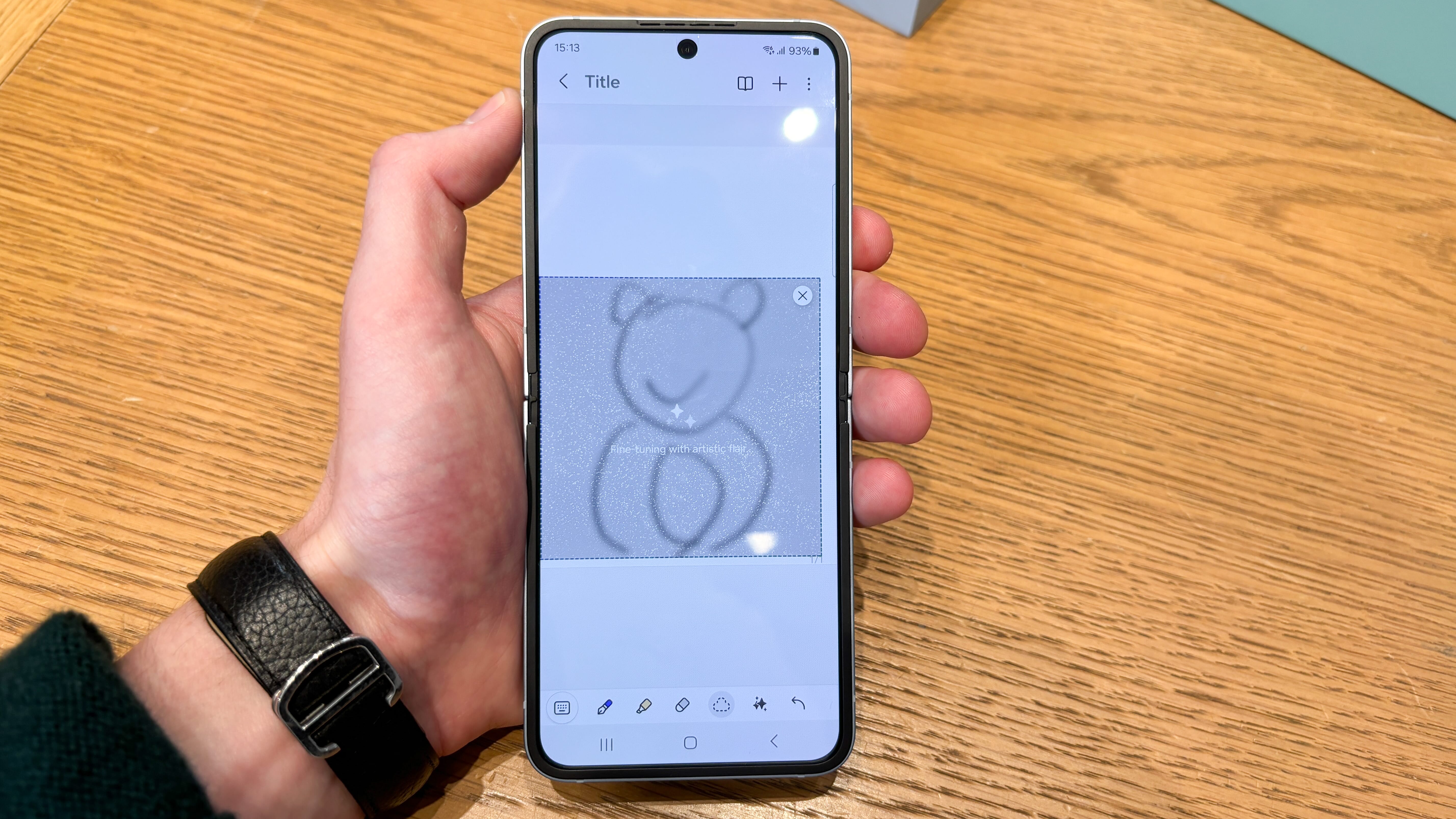
Samsung has added foldable-specific optimizations to certain Galaxy AI features, too. Interpreter, for instance, now lets you conduct live, two-way translated conversations using the internal and external displays. This meant I was able to ask, in English, a Korean-speaking Samsung representative about a particular regional dish, and they were able to view and answer my question, in Korean, via the Galaxy Z Flip 6’s cover display. It’s a truly impressive – and, crucially, useful – upgrade to an already impressive feature.
As for Samsung’s update commitment to the Galaxy Z Flip 6, you’ll get seven years of software updates and seven years of security updates, which should ensure Apple-level longevity.
One note I would add about all this great Galaxy Z Flip 6 software is that I don’t think these optimizations will remain exclusive to the Galaxy Z Flip 6 for long. I highly doubt that they’re dependent on the power of the Snapdragon 8 Gen 3, and if they aren’t, then I expect Samsung to roll out similar optimizations for the Galaxy Z Flip 5 – and potentially even the Galaxy Z Flip 4 – in the months following the Galaxy Z Flip 6’s launch.
Samsung took a similar approach with the first set of Galaxy AI features, which launched as temporarily exclusive to the Galaxy S24 before becoming available at a later date on selected older-generation Samsung phones. And while this is by no means a bad thing (quite the opposite – good on Samsung!), it may be hard to recommend the Galaxy Z Flip 6 on the basis of excellent software alone. By the time we publish our full review of the device, perhaps we’ll know more about Samsung’s plans for the future rollout of these features.
All told, then, the Galaxy Z Flip 6 represents an iterative but welcome upgrade over the Galaxy Z Flip 5. It isn’t likely to be a must-own device for anyone who’s already using a relatively recent Galaxy Flip phone, but if you’ve been hesitant to try a foldable due to concerns over practicality, then the Galaxy Z Flip 6 could be the perfect place to start.
Specs comparison

Here’s how the Galaxy Z Flip 6 stacks up against the Galaxy Z Flip 5 in terms of specs.
| Galaxy Z Flip 6 | Galaxy Z Flip 5 | |
|---|---|---|
| Dimensions (folded): | 85.1 x 71.9 x 15.1mm | 85.1 x 71.9 x 15.1mm |
| Dimensions (unfolded): | 71.9 x 165.1 x 6.9mm | 71.9 x 165.1 x 6.9mm |
| Weight: | 187g | 187g |
| Main display: | 6.7-inch Full HD+ (2640 x 1080) adaptive 120Hz AMOLED | 6.7-inch Full HD+ (2640 x 1080) adaptive 120Hz AMOLED |
| Cover display: | 3.4-inch (720 x 748) 60Hz AMOLED | 3.4-inch (720 x 748) 60Hz AMOLED |
| Chipset: | Qualcomm Snapdragon 8 Gen 3 | Qualcomm Snapdragon 8 Gen 2 for Galaxy |
| RAM: | 12GB (LPDDR5X) | 8GB (LPDDR5X) |
| Storage: | 256GB / 512GB (UFS 4.0) | 256GB / 512GB (UFS 4.0) |
| OS (at launch): | Android 14 w/ One UI 6.1 | Android 13 w/ One UI 5.1.1 |
| Primary camera: | 50MP, f/1.8 w/ OIS | 12MP, f/1.8 w/ OIS |
| Ultra-wide camera: | 12MP, f/2.2, 123º FoV | 12MP, f/2.2, 123º FoV |
| Front Camera: | 10MP, f/2.2, 85º FoV | 10MP, f/2.2, 85º FoV |
| Battery: | 4,000mAh | 3,700mAh |
| Charging: | 25W wired charging, 15W wireless charging, 4.5W reverse wireless charging | 25W wired charging, 15W wireless charging, 4.5W reverse wireless charging |
Samsung Galaxy Z Flip 6: Should you pre-order?
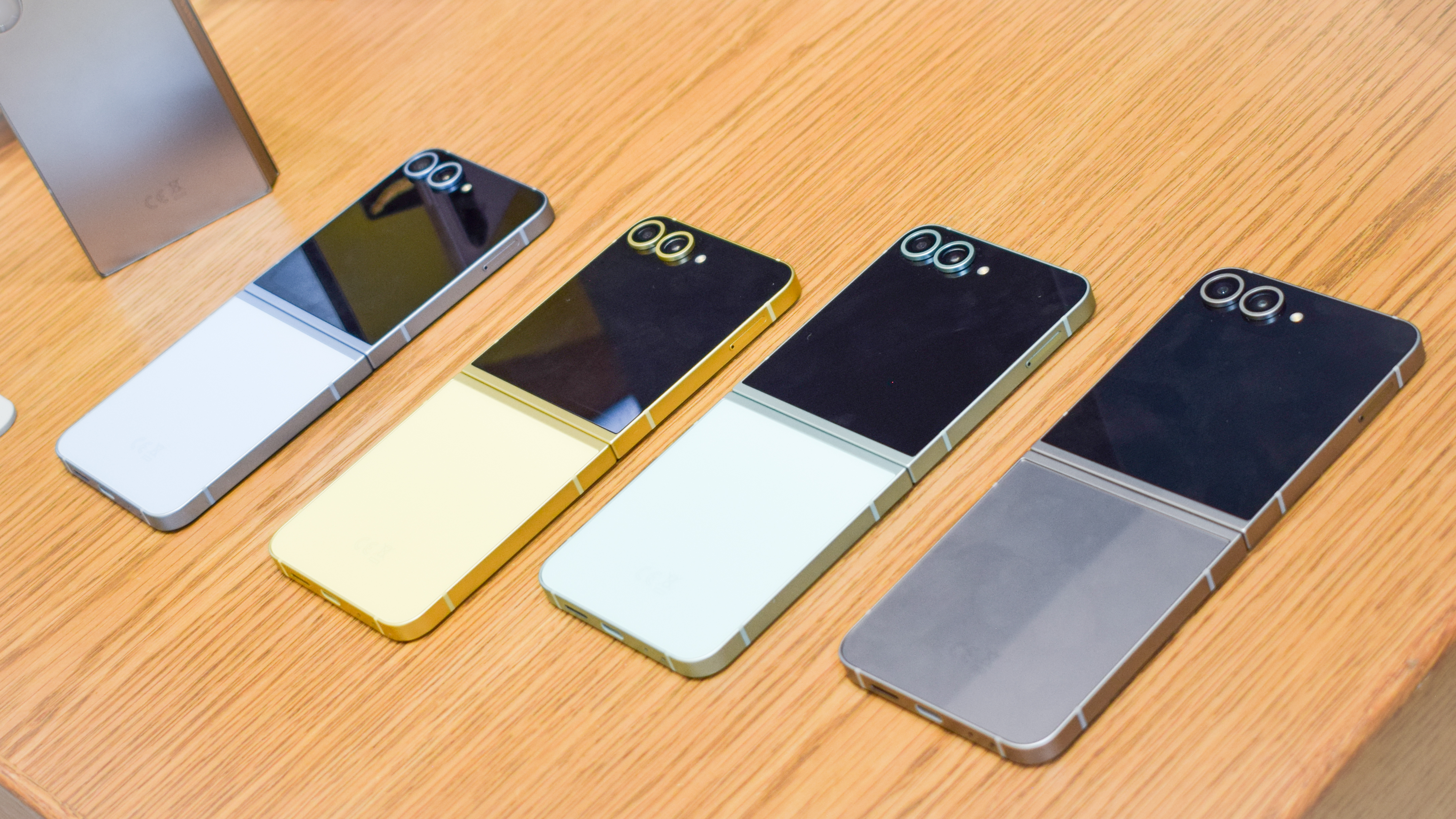
Samsung Galaxy Z Flip 6 pre-orders are now open, with the phone set to begin shipping on July 24. In Australia, shipping will begin on July 31.
The Galaxy Z Flip 6 starts at $1,099.99 / £1,049 / AU$1,799 for the model with 12GB RAM and 256GB storage, rising to $1219.99 / £1,149 / AU$1,999 for the model with 512GB of storage.
For context, that starting price is $100 / AU$150 higher than that of the Galaxy Z Flip 5, though you do get 12GB RAM instead of 8GB with the Galaxy Z Flip 5. UK pricing remains unchanged across both storage variants.
So, should you pre-order the Galaxy Z Flip 6? Well, that depends on what phone you’re currently using, as well as how much you value mobile photography.
In a straight shootout between Samsung’s newest foldable and the Galaxy Z Flip 5, the former wins out – on paper, at least – in several departments. It’s got a better main camera, a faster Snapdragon 8 Gen 3 chipset, a bigger batter, improved durability and, in my opinion, a slightly more premium-looking design.
That said, I don’t think any of these new features will warrant a direct generational upgrade, unless you’re particularly disappointed with the Galaxy Z Flip 5’s 12MP main camera, and are clamouring for a more powerful 50MP snapper.
Mind you, if you’re not reading this hands-on review as an existing Galaxy Z Flip owner, and are considering whether to dive into foldable phones for the first time, then the Galaxy Z Flip 6 looks certain to rank alongside the best foldable phones (and indeed the best Samsung phones) we’ve ever tested.


